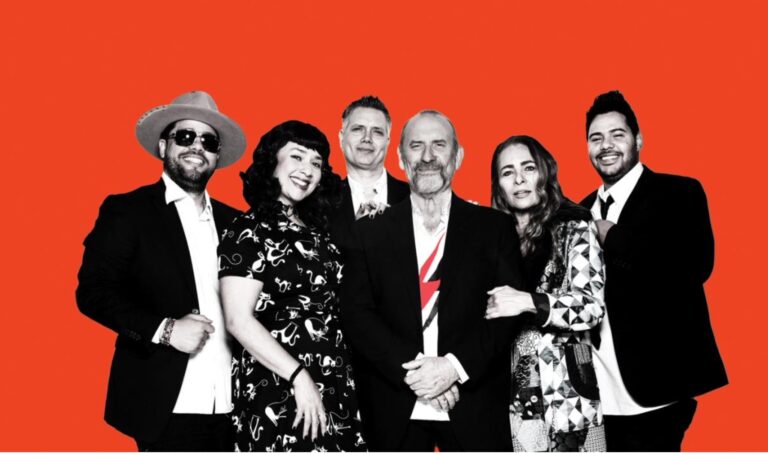
Waterloo Metro development under fire

By Allison Hore
Waterloo’s proposed Metro Quarter development faces opposition, with Lord Mayor Clover Moore calling on members of the community to make submissions to the state government detailing their concerns about the project.
The Metro Quarter will be constructed above and around the new Waterloo Metro station which is bounded by Botany Road, and Cope, Raglan and Wellington Streets. The precinct will include new housing, restaurants, shops and community facilities.
But Cr Moore told City Hub that she is “extremely concerned about the proposed development of the Waterloo Metro Quarter”.
She says the major impacts that the development would have on the area are an increase in population density, loss of green space and sunlight, and traffic congestion caused by the additional 4,300 parking spaces planned for the area.
Cumulative impacts of proposals
A spokesperson for UrbanGrowth NSW says that the project has been planned under strict regulation, and that their plans take these things into account.
“The design of the Metro Quarter has been subject to stringent study requirements and has been overseen by a panel including senior representatives of the NSW Government Architect,” a spokesperson said.
But Cr Moore says UrbanGrowth has not considered how the impact of this development will be compounded by the footprint of other large developments planned for the area.
“The exhibition and assessment of the Waterloo Metro Quarter, in isolation from future plans for the Waterloo Estate, fails to consider the cumulative impacts of both proposals on the local community,” she says.
The Metro Quarter will deliver 700 new homes to the Waterloo area across three residential buildings of more than 20 storeys. Some 5 to 10% of the units are supposed to be set aside for affordable housing and 70 for social housing.
UrbanGrowth says that this will improve housing access and affordability in the area. They say the variety of housing available will “meet the housing needs of people with different backgrounds, ages, incomes, abilities and lifestyles”.
Cr Moore would like to see a bigger commitment, especially as the current plans only commit to 10 years of affordable housing.
Redfern community group REDWatch agrees, adding that they believe the NSW Government needs to prioritise affordable housing for Redfern’s Aboriginal community.
“One of the areas that came out strongly during the Waterloo visioning was the need for Aboriginal Affordable Housing to ensure there will be a long-term viable Aboriginal community in Redfern and Waterloo. This is missing totally from the Waterloo Metro proposal,” they said in an email to their supporters.
REDWatch argues that 5% of the total housing should be set aside for Affordable Aboriginal Housing.
Cr Moore says she supports the development of affordable housing for the Aboriginal community in the area. She thinks the NSW Government is putting profit before people with these plans.
“The Waterloo Metro Quarter and Waterloo Estate sit on public land – they must exist for the public good. The NSW Government must therefore commit to greater levels of affordable and social housing – especially in the context of the current housing crisis,” she says.
“As a community, we believe in keeping public lands in the hands of the public – not selling them off to the highest bidder.”
The Waterloo Metro precinct will be a “community heart” that recognises the diversity and heritage of the area, says UrbanGrowth NSW. In their consultation process they found that the community supported the inclusion of cultural spaces, shops, service and open space.
“There was a strong desire to maintain Waterloo’s unique character and celebrate its history and heritage, in particular its significant Aboriginal heritage.”
According to the 2016 census, Aboriginal and Torres Strait Islander people made up 2.1% of Redfern’s population and 3% of Waterloo’s population. In 1968, this percentage was much higher with around 35,000 Indigenous people living in the area. Today there are less than 1,000 Indigenous people in Waterloo and Redfern.
Gentrification driving out locals
“In the last 20 years things have changed so much it’s not the same community anymore,” local Wiradjuri woman Lorna Munro told NITV in 2016.
“Massive gentrification is happening in the area, so on one side of the street you’ve got people that are living off $300 a fortnight across the road from private housing and hipsters and swanky coffee shops and pubs.”
Critics of the Metro project believe that it will continue the gentrification process that has pushed Aboriginal families from the inner city.
When asked about the impacts this project might have on the local Aboriginal community, the UrbanGrowth NSW spokesperson said that they have been working alongside the community in the design process.
The NSW Government is accepting submissions on the development until 20 January. Members of the public looking for more information can also contact the NSW Department of Planning and Environment.









